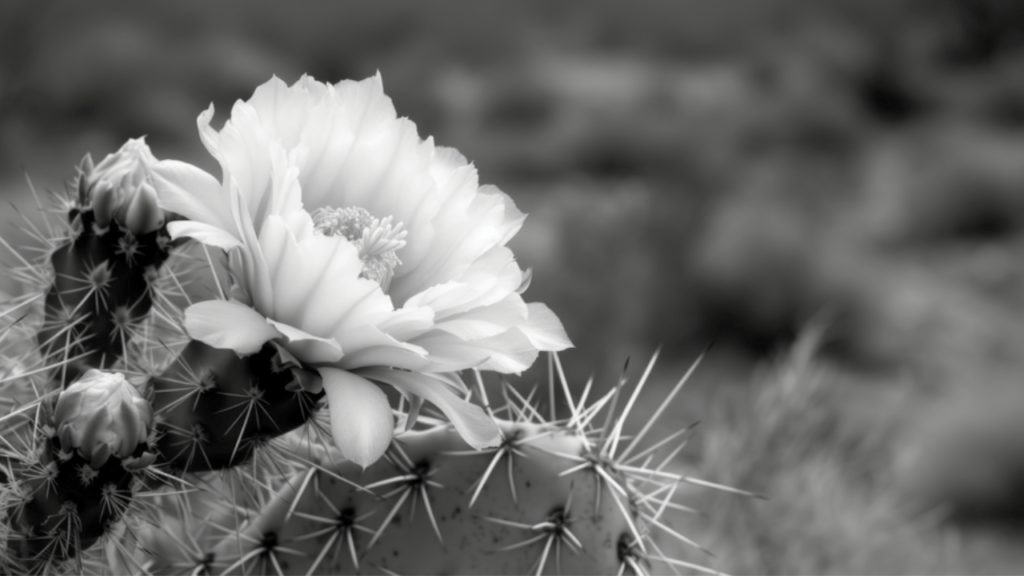
White Flower Black: A Stunning Contrast for Your Garden
White Flower Black is a focus keyword that describes the stunning contrast of white flowers against dark foliage in a garden. This combination creates a visually captivating and dramatic effect that can enhance the overall aesthetic of the outdoor space. White flowers stand out against the dark foliage, creating a striking contrast that draws attention and adds dimension to the garden. Whether you are an experienced gardener or a beginner, incorporating white flowers and dark foliage into your garden design can create a beautiful and visually appealing landscape. This combination can be achieved by selecting white-flowering plants and pairing them with shrubs, trees, or ornamental grasses with dark or black foliage. By carefully planning and choosing the right plants, you can create a stunning contrast in your garden that will leave a lasting impression.
The contrast of white and black in nature is not only visually intriguing but also holds symbolism. In nature, white often represents purity, innocence, and new beginnings, while black symbolizes mystery, elegance, and strength. When we see these contrasting colors in nature, such as white flowers against black foliage, it creates a sense of balance and harmony. It is a testament to the beauty and diversity of the natural world. The juxtaposition of these colors can also be seen as a representation of the duality of life – light and dark, yin and yang. This contrast can be found in various aspects of nature, from animals and insects to plants and landscapes. It is a reminder that even in the midst of opposites, there is beauty and balance to be found. Whether it’s the delicate petals of a white flower against the deep hue of black foliage or the contrast of a snowy mountain against a dark forest, the combination of white and black in nature never fails to captivate and inspire
Table of Contents
ToggleWhite Flowers in Nature
Overview of various species of flowers that are predominantly white.
The color white holds a special place in the world of flowers, symbolizing purity, innocence, and new beginnings. There are many species of flowers that are predominantly white, each with its own unique beauty and significance. From the elegant white lily, symbolizing purity and virtue, to the delicate white rose, representing innocence and new beginnings, there is a wide variety of white flowers in nature. Other white flowers, such as the daisy and orchid, also hold their own symbolism and charm. The contrast of white flowers against green foliage or dark backgrounds creates a visually stunning display in gardens and landscapes. White flowers also have a calming and soothing effect, making them a popular choice for weddings and special occasions. Whether used in floral arrangements or enjoyed in their natural habitat, white flowers bring a sense of purity and tranquility to any environment.
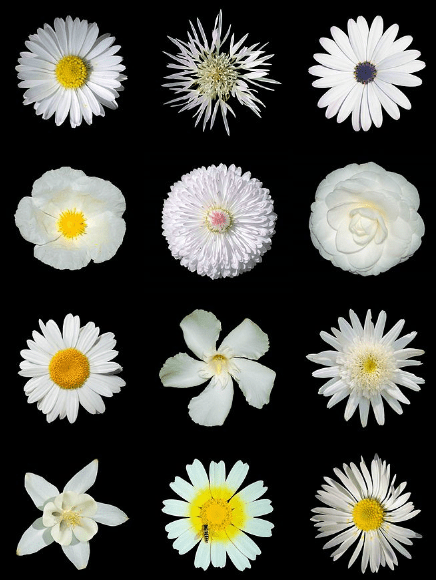
Significance of white flowers in different cultures and traditions.
White flowers hold a significant place in different cultures and traditions. In many cultures, white flowers symbolize purity, innocence, and new beginnings. For example, in Western cultures, the white lily is often associated with purity and virtue, while the white rose represents innocence and new beginnings. In Eastern cultures, the lotus flower, often depicted as white, holds deep spiritual and religious significance, symbolizing purity and enlightenment. In some cultures, white flowers are used in funerary traditions to symbolize the purity and transition of the soul. Additionally, white flowers are often used in religious ceremonies and rituals, signifying peace and tranquility. Their beauty and symbolism make white flowers a popular choice for weddings, where they are seen as a representation of the pure and everlasting love between partners. Overall, white flowers hold a universal significance across different cultures, representing purity, peace, and new beginnings.
Symbolism associated with white flowers (purity, innocence, spirituality).
White flowers have long been associated with purity, innocence, and spirituality in many different cultures. In Western cultures, the white lily is often seen as a symbol of purity and virtue, while the white rose is associated with innocence and new beginnings. In Eastern cultures, the lotus flower, often depicted as white, holds deep spiritual and religious significance, symbolizing purity and enlightenment. In some cultures, white flowers are used in funerary traditions to symbolize the purity and transition of the soul. Additionally, white flowers are often used in religious ceremonies and rituals, signifying peace and tranquility. Their beauty and symbolism make white flowers a popular choice for weddings, where they are seen as a representation of the pure and everlasting love between partners. Overall, white flowers hold a universal significance across different cultures, representing purity, peace, and new beginnings.
Black in Nature: Beyond the Absence of Light
Explanation of how black is perceived in nature (e.g., black animals, insects, geological formations).
Black is often associated with mystery, power, and elegance in the natural world. Many animals, such as panthers, snakes, and birds, have black coloring that helps them blend into their surroundings, giving them a sense of stealth and power. Insects like black beetles and butterflies also display dark coloration that serves as a form of protection and camouflage. In geological formations, black rocks and minerals, such as obsidian and onyx, are prized for their striking appearance and are often used in jewelry and decorative items. Overall, black in nature represents strength, resilience, and a sense of allure that adds depth and intrigue to the natural world.
Evolutionary advantages and adaptations of organisms that are black.
Black organisms in nature have evolved to have certain advantages and adaptations that help them thrive in their environments. Many black animals, such as panthers, snakes, and birds, use their dark coloring to blend in with their surroundings, making it easier for them to hunt and avoid predators. This provides them with a sense of stealth and power that helps them survive in their habitats. Additionally, black insects like beetles and butterflies use their coloration as a form of protection and camouflage, allowing them to avoid detection by predators. In the case of geological formations, black rocks and minerals, such as obsidian and onyx, are valued for their striking appearance and are often used in jewelry and decorative items. Overall, black in nature represents strength, resilience, and a sense of allure that adds complexity and intrigue to the natural world. These evolutionary advantages and adaptations have allowed black organisms to thrive and play important roles in their ecosystems.
Cultural perceptions and symbolism of black in different contexts.
Cultural perceptions and symbolism of black in different contexts vary widely across different societies and time periods. In some cultures, the color black is associated with mourning and sadness, while in others it is seen as a symbol of power, elegance, and sophistication. In fashion, black is often used to convey a sense of formality and style, while in art and literature, it can represent mystery and the unknown.
In some cultures, the color black is associated with witchcraft and dark magic, while in others it is seen as a symbol of protection and warding off evil. In many African and African-American cultures, black is a symbol of strength and resilience, often associated with the power of the earth and the cosmos.
In terms of symbolism, black is often used to represent the unknown, the mysterious, and the hidden. It can also symbolize sophistication, formality, and elegance. In some cultures, black is also associated with rebellion and non-conformity.
In religious contexts, black can have different meanings as well. In Christianity, black is often associated with mourning and penance, while in some Eastern religions, it can represent the void or the absence of light.
Overall, the symbolism of black is complex and multifaceted, and its meanings can vary greatly depending on cultural and personal perspectives.
White Flowers with Black Accents
Exploration of flowers that feature black elements or patterns.
Flowers with black elements or patterns can add a unique and striking touch to any garden or floral arrangement. Black flowers or flowers with black accents are often rare and can be a focal point of interest. Some examples of flowers with black elements include the Black Magic Rose, the Black Parrot Tulip, and the Black Bat Flower. These flowers can add a sense of mystery and elegance to any garden or floral display. The exploration of flowers with black elements can also be a way to incorporate cultural symbolism and meaning, as black is often associated with strength, resilience, and the unknown in many cultures. Overall, the exploration of flowers with black elements can be a fascinating and meaningful addition to any floral collection.
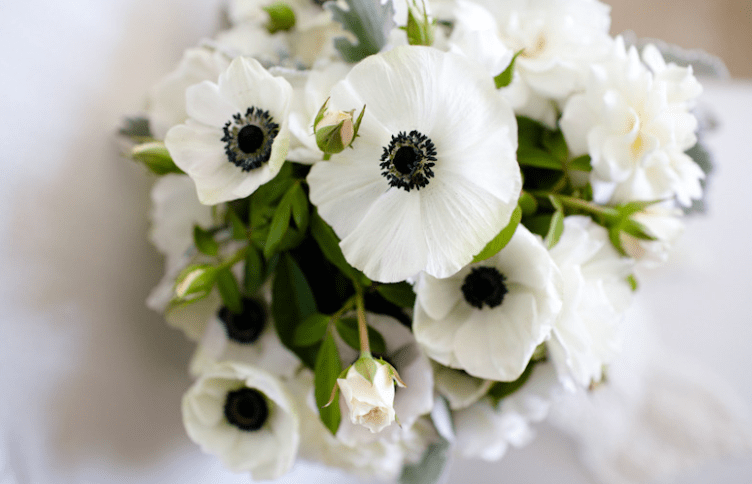
Botanical examples and descriptions of white flowers with black markings or centers.
White flowers with black accents can add a unique and striking touch to any garden or floral arrangement. One example of a flower with black elements is the Black Magic Rose. This rose features deep black petals that create a stunning visual contrast against the traditional white rose. Another example is the Black Parrot Tulip, which has deep purple-black markings on its pale white petals, creating a dramatic and eye-catching look. The Black Bat Flower is another example, with its intricate black bat-like center adding a sense of mystery and elegance to any garden. These flowers can add a sense of mystery and elegance to any garden or floral display. The exploration of flowers with black elements can also be a way to incorporate cultural symbolism and meaning, as black is often associated with strength, resilience, and the unknown in many cultures. Overall, the exploration of flowers with black elements can be a fascinating and meaningful addition to any floral collection.
Black Flowers: Rarity and Intrigue
Identification of naturally occurring black flowers in nature.
Naturally occurring black flowers are a rare and intriguing phenomenon in nature. One example of a flower with black elements is the Black Magic Rose. This rose features deep black petals that create a stunning visual contrast against the traditional white rose. Another example is the Black Parrot Tulip, which has deep purple-black markings on its pale white petals, creating a dramatic and eye-catching look. The Black Bat Flower is another example, with its intricate black bat-like center adding a sense of mystery and elegance to any garden. These flowers can add a sense of mystery and elegance to any garden or floral display. The exploration of flowers with black elements can also be a way to incorporate cultural symbolism and meaning, as black is often associated with strength, resilience, and the unknown in many cultures. Overall, the exploration of flowers with black elements can be a fascinating and meaningful addition to any floral collection.
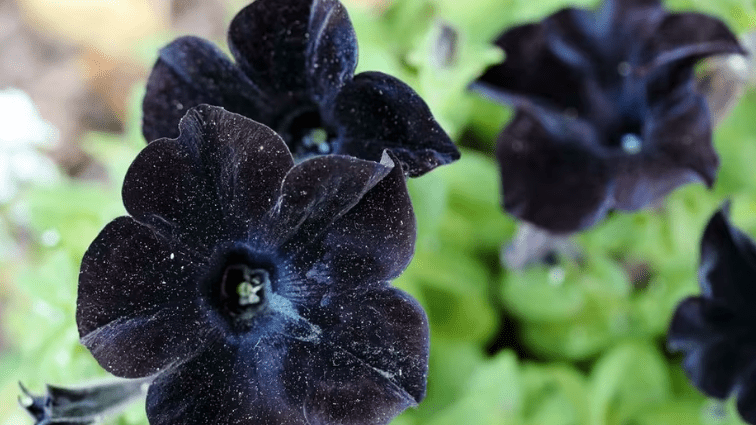
Unique characteristics and adaptations of black flowers.
Black flowers have unique characteristics and adaptations that make them stand out in any garden or floral display. One example of a flower with black elements is the Black Magic Rose. This rose features deep black petals that create a stunning visual contrast against the traditional white rose. Another example is the Black Parrot Tulip, which has deep purple-black markings on its pale white petals, creating a dramatic and eye-catching look. The Black Bat Flower is another example, with its intricate black bat-like center adding a sense of mystery and elegance to any garden. These flowers can add a sense of mystery and elegance to any garden or floral display.
The exploration of flowers with black elements can also be a way to incorporate cultural symbolism and meaning, as black is often associated with strength, resilience, and the unknown in many cultures. Overall, the exploration of flowers with black elements can be a fascinating and meaningful addition to any floral collection. Whether it’s the striking visual contrast of the Black Magic Rose, the dramatic markings of the Black Parrot Tulip, or the elegant mystery of the Black Bat Flower, these flowers with black elements offer a unique and captivating addition to any garden or floral arrangement.
Cultural interpretations and symbolism of black flowers (mystery, elegance, power).
Black flowers hold a sense of mystery, elegance, and power in many cultural interpretations and symbolism. The deep black petals of the Black Magic Rose, for example, create a stunning visual contrast against the traditional white rose, while the Black Parrot Tulip features deep purple-black markings on its pale white petals, creating a dramatic and eye-catching look. The Black Bat Flower adds a sense of mystery and elegance with its intricate black bat-like center. These flowers can add a sense of depth and intrigue to any garden or floral display. In many cultures, the color black is associated with strength, resilience, and the unknown, adding a layer of symbolic meaning to these flowers. Exploring flowers with black elements can be a fascinating and meaningful addition to any floral collection, offering a unique and captivating addition to any garden or floral arrangement.
Contrast and Symbiosis: White Flowers and Black Elements
Ecological significance of the contrast between white flowers and black elements.
The contrast between white flowers and black elements holds ecological significance. In nature, the contrast between white flowers and black elements can attract different pollinators and play a role in the reproductive success of the plants. The stark contrast between the two colors can make the flowers more noticeable to pollinators such as bees, butterflies, and birds, thereby increasing the chances of successful pollination. This can lead to the production of seeds and the continuation of plant species. The black elements within the flowers, such as deep black petals or intricate black markings, can also serve as a visual cue for specific pollinators, guiding them towards the flowers for pollination. Additionally, the contrast between white flowers and black elements can also contribute to the overall aesthetic appeal of a garden or natural landscape, creating a visually striking and captivating display. Overall, the contrast between white flowers and black elements in nature has both ecological and visual significance, making it a fascinating aspect to explore and appreciate.
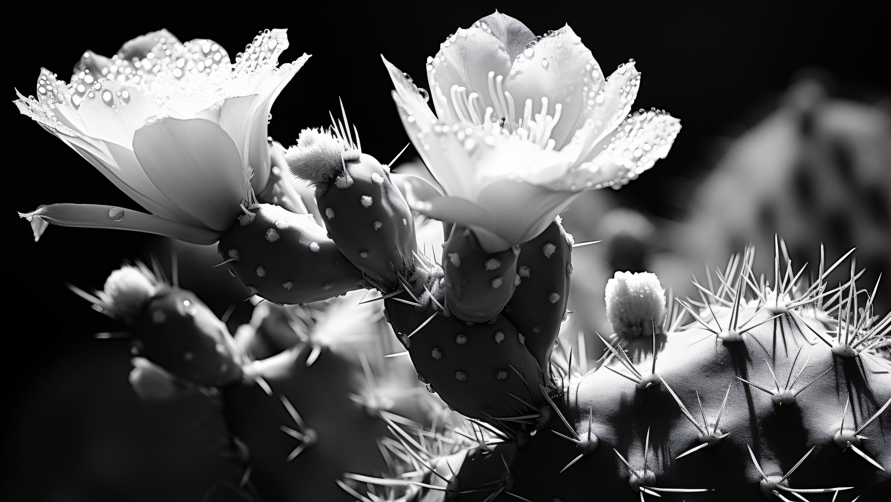
Examples of symbiotic relationships involving white flowers and black organisms (e.g., pollinators, camouflage).
Many examples of symbiotic relationships involving white flowers and black organisms exist in nature. For instance, some white flowers have evolved to attract specific pollinators, such as bees, butterflies, and birds, through their contrasting dark centers or markings. The darkness of these structures provides a visual guide for pollinators, helping them locate the flowers more easily. In return, the pollinators benefit from the nectar or pollen provided by the flowers. This mutualistic relationship benefits both the plants and the pollinators by ensuring successful reproduction and the continuation of plant species.
Additionally, some white flowers may also have black elements for camouflage or protection. For example, certain orchids have dark spots on their petals that resemble the appearance of insect eggs, deterring egg-laying insects from damaging the flowers. This form of mimicry helps the flowers avoid predation and ensures their survival.
Overall, the relationship between white flowers and black organisms, whether for pollination or camouflage, highlights the intricate and interconnected web of life in nature. It’s a fascinating aspect of ecological balance and adaptation that demonstrates the beauty and complexity of the natural world.
Horticultural and Garden Perspectives
The relationship between white flowers and pollinators is crucial for the survival of both the plants and the pollinators. The flowers provide nectar or pollen for the pollinators, while the pollinators ensure successful reproduction and continuation of plant species. Some white flowers also have black elements for camouflage or protection, such as dark spots on petals that resemble insect eggs, deterring egg-laying insects from damaging the flowers. This mutually beneficial relationship highlights the intricate and interconnected web of life in nature and showcases the beauty and complexity of the natural world. It’s important to recognize and appreciate the role that pollinators play in maintaining ecological balance and the survival of plant species.
Cultural and Symbolic Representations
White flowers and black organisms have various cultural and symbolic representations across different cultures and traditions. In some cultures, white flowers symbolize purity, innocence, and spirituality, while black organisms may symbolize mystery, elegance, or even death. These representations are often reflected in art, literature, and religious or ceremonial practices. For example, white flowers are often used in wedding bouquets to symbolize purity and new beginnings, while black butterflies or moths may be seen as symbols of transformation or spiritual guidance in some cultures. It’s fascinating to see how these natural elements are woven into cultural symbolism and traditions, adding depth and meaning to our understanding of the natural world.
Scientific Explanations and Studies
: The relationship between pollinators and plants is essential for the survival of many plant species. Pollinators such as bees, butterflies, and birds play a crucial role in the process of pollination, which is necessary for the reproduction of flowering plants. Through the transfer of pollen from one flower to another, pollinators enable the production of fruits and seeds, contributing to the biodiversity and sustainability of ecosystems. Numerous scientific studies have shown the importance of pollinators in maintaining healthy and robust plant populations. Additionally, research has demonstrated the impact of environmental factors, such as habitat loss and climate change, on pollinator populations and their ability to perform effective pollination. Understanding the scientific explanations and findings related to pollinators and plant reproduction can inform conservation efforts and management strategies to support these essential ecological interactions.
In conclusion, creating a stunning contrast in your garden with white flowers against dark foliage can really make your outdoor space stand out. By choosing the right plants and arranging them in a visually appealing way, you can achieve a captivating and beautiful look for your garden. Whether you’re a seasoned gardener or just starting out, incorporating this stunning contrast can take your garden to the next level. Explore different plant options and designs to create a unique and eye-catching outdoor space.
Frequently asked questions And Answer
White flower black plants create a stunning contrast in your garden, adding depth and visual interest to your landscape. They also provide a striking focal point and can help highlight other colorful flowers in your garden.
Some popular white flower black plants include White Swan Black-Eyed Susans, Black Hollyhocks, White Bleeding Hearts, and Black Beauty Roses. These plants can add elegance and drama to any garden.
White flower black plants generally require the same care as other flowering plants. They need regular watering, well-drained soil, and plenty of sunlight. It’s also important to deadhead the flowers to encourage continuous blooming.
Yes, white flower black plants can attract pollinators such as bees and butterflies. The contrast of the white and black colors can be especially attractive to these pollinators, making them a beneficial addition to any garden.
White flower black plants generally thrive in full sun to partial shade and well-drained soil. It’s important to research the specific growing conditions for each plant to ensure they thrive in your garden.
Yes, many white flower black plants can be grown in containers, making them a versatile option for small gardens or balconies. Just make sure the containers have proper drainage and provide the necessary sunlight for the plants to flourish.
White flowers often symbolize purity and innocence, while black flowers can symbolize mystery and elegance. The combination of these colors can create a unique and intriguing symbolic presence in your garden.
You can find white flower black plants at local nurseries, garden centers, or online plant retailers. It’s important to choose healthy plants and consider the specific growing requirements for your region before making a purchase.
